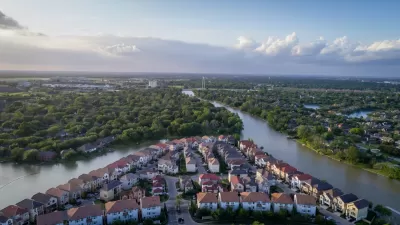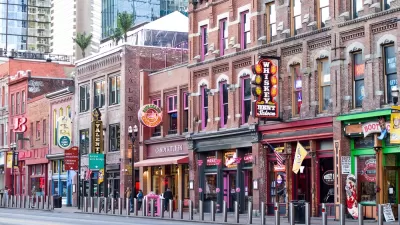The Chinese government wants an influx of nearly 100 million new urban residents by 2020. In order to accommodate a migration of this nature, China's urban planners are tasked with creating cities to be more livable.
It has taken Chinese officials nearly 40 years to reconvene and discuss best practices for developing the country's urban centers. Now, with nearly half of the population living in cities, and an additional 100 million desired, "central government officials pledged to tackle air pollution, traffic gridlock, and lack of civic resources." reports Sarah O'Meara.
The passion that China's urban planners bring to large scale city design is easy to find in theory, implementing these design projects however have come with their fair share of challenges. "The laws in the field make it very hard to innovate. Every city is made by the planning authority, under the existing planning management system, according to existing standards. They all share one law. That’s why they are all the same." says Jinkui Li, a senior researcher as Shenzhen-based think tank China Development Institute.
Experts indicate that planning policy in China needs to change to better assist the professionals in meeting the needs of creating livable communities. Beijing-based urban planner Jasmine Tillu says “At the moment, you have leaders saying ‘Make urban planning more sustainable,’ but the actual on-the-ground policies don’t allow for it."
As for the rise in prominence of new urban centers, experts point to the established "urban villages" on the fringe of China's megacities, Beijing, Shanghai, Guangzhou and Shenzhen. These villages are known to be the most hospitable transitions for many migrants leaving the countryside for a new urban life. Changes are happening and it is exciting urban planners globally. If China's officials are able to step away from a "top-down, large scale" planning model and provide the residents civic engagement opportunities the future is bright.
FULL STORY: Making China's Urban Fringes More Livable

Study: Maui’s Plan to Convert Vacation Rentals to Long-Term Housing Could Cause Nearly $1 Billion Economic Loss
The plan would reduce visitor accommodation by 25,% resulting in 1,900 jobs lost.

North Texas Transit Leaders Tout Benefits of TOD for Growing Region
At a summit focused on transit-oriented development, policymakers discussed how North Texas’ expanded light rail system can serve as a tool for economic growth.

Why Should We Subsidize Public Transportation?
Many public transit agencies face financial stress due to rising costs, declining fare revenue, and declining subsidies. Transit advocates must provide a strong business case for increasing public transit funding.

How to Make US Trains Faster
Changes to boarding platforms and a switch to electric trains could improve U.S. passenger rail service without the added cost of high-speed rail.

Columbia’s Revitalized ‘Loop’ Is a Hub for Local Entrepreneurs
A focus on small businesses is helping a commercial corridor in Columbia, Missouri thrive.

Invasive Insect Threatens Minnesota’s Ash Forests
The Emerald Ash Borer is a rapidly spreading invasive pest threatening Minnesota’s ash trees, and homeowners are encouraged to plant diverse replacement species, avoid moving ash firewood, and monitor for signs of infestation.
Urban Design for Planners 1: Software Tools
This six-course series explores essential urban design concepts using open source software and equips planners with the tools they need to participate fully in the urban design process.
Planning for Universal Design
Learn the tools for implementing Universal Design in planning regulations.
City of Santa Clarita
Ascent Environmental
Institute for Housing and Urban Development Studies (IHS)
City of Grandview
Harvard GSD Executive Education
Toledo-Lucas County Plan Commissions
Salt Lake City
NYU Wagner Graduate School of Public Service





























